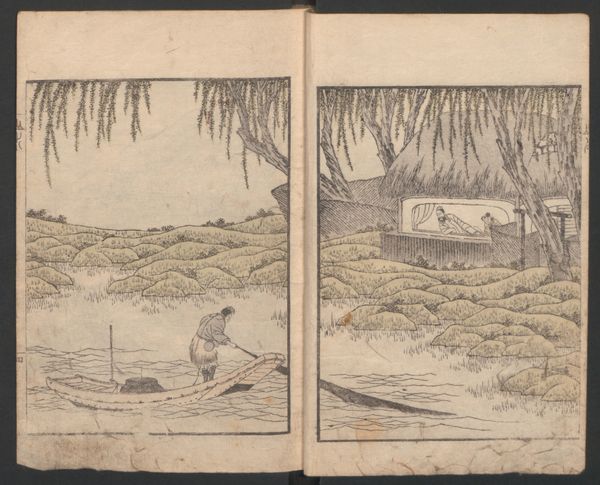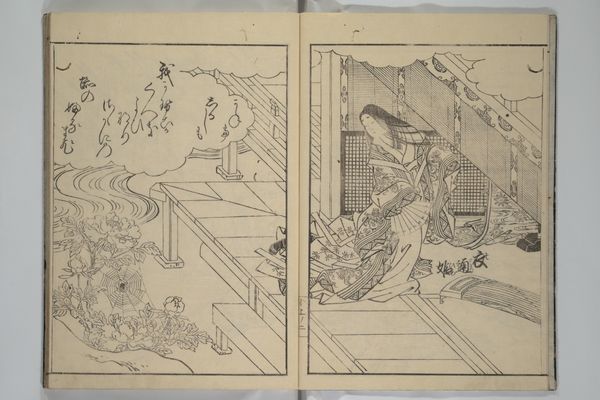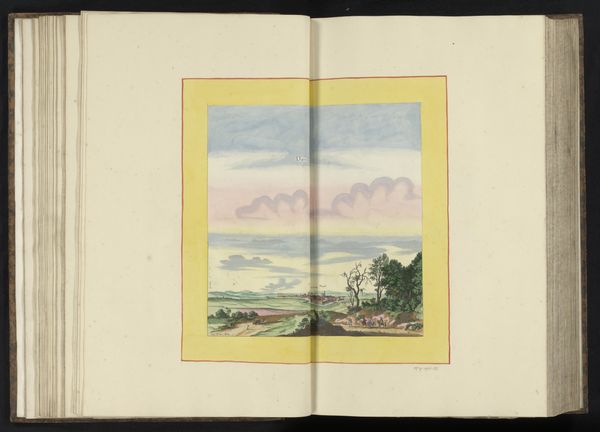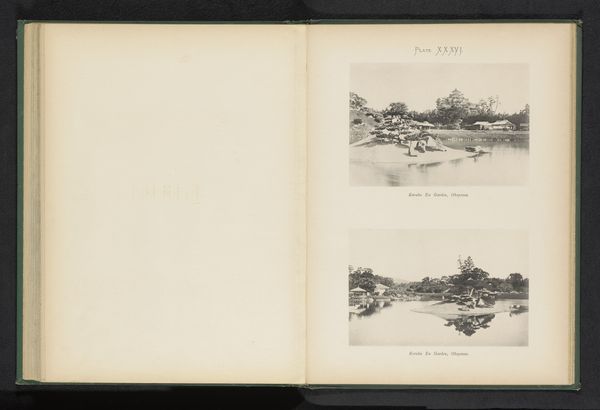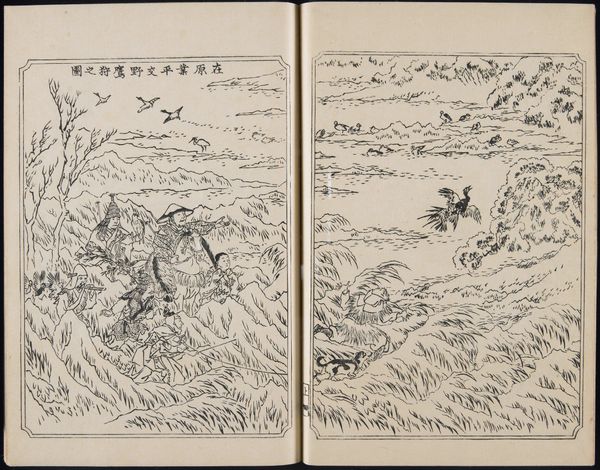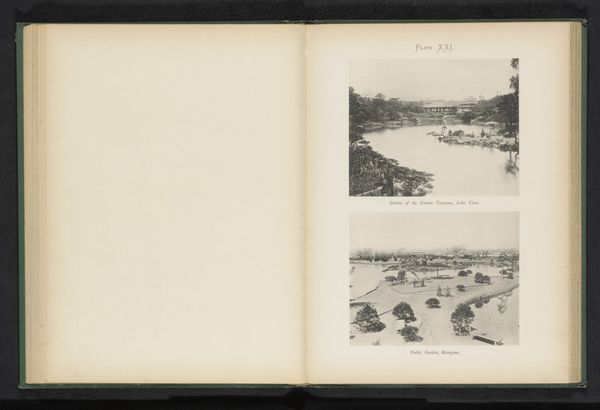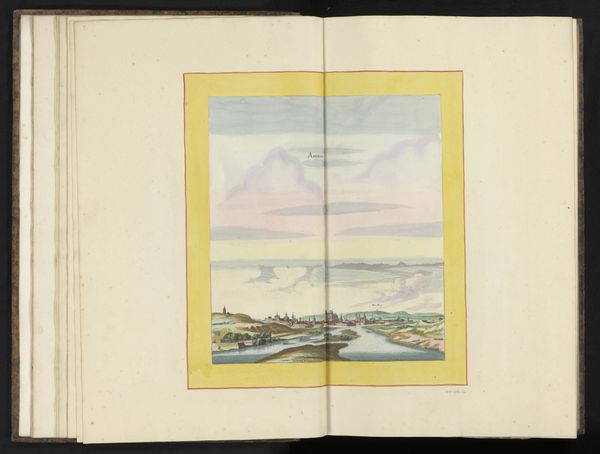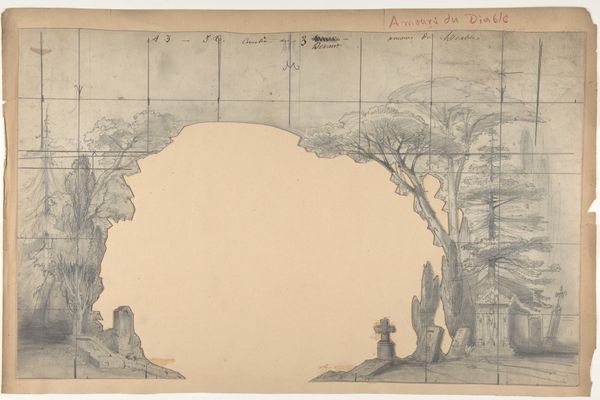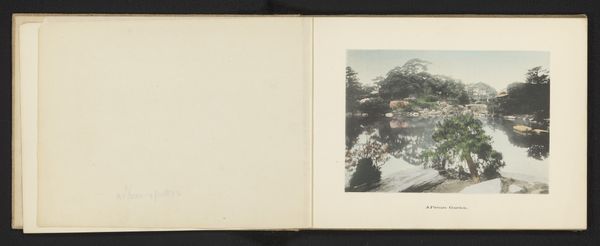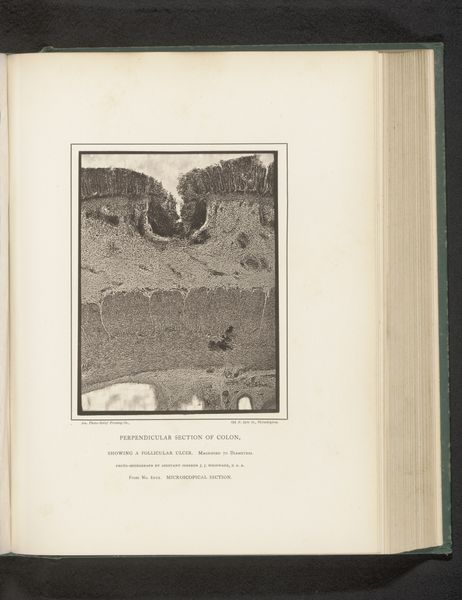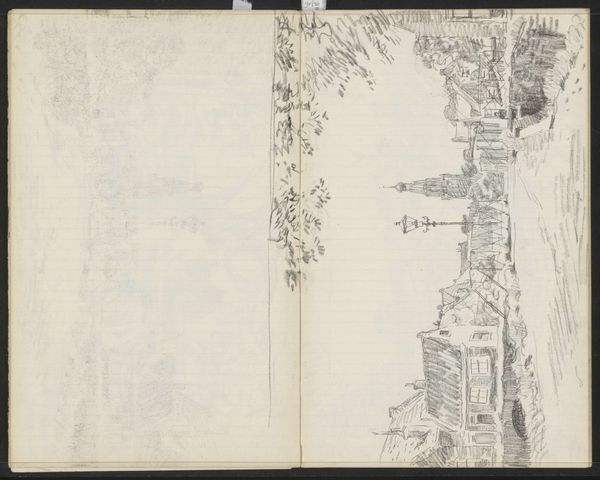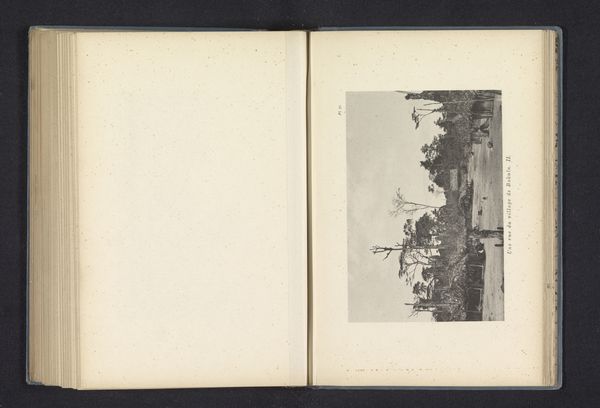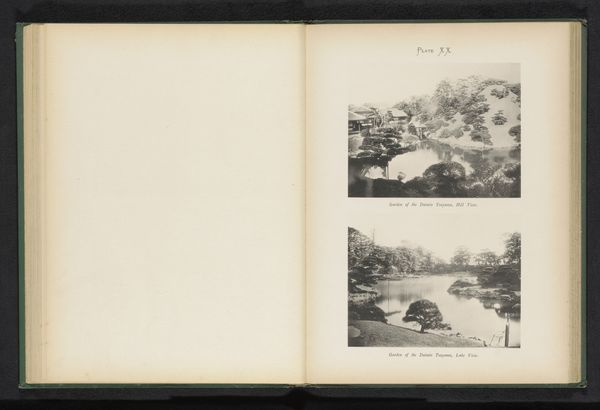
One Hundred Views of Mount Fuji Possibly 1834 - 1875
0:00
0:00
print, woodblock-print, engraving
# print
#
book
#
asian-art
#
sketch book
#
landscape
#
ukiyo-e
#
japan
#
woodblock-print
#
japanese
#
engraving
Dimensions: 1/4 x 6 1/8 x 8 15/16 in. (0.7 x 15.6 x 22.7 cm)
Copyright: Public Domain
Curator: This is a page from Katsushika Hokusai’s “One Hundred Views of Mount Fuji," likely created sometime between 1834 and 1875. It's a woodblock print, part of a larger book. Editor: My immediate reaction is one of quiet awe. The stark lines, the contrast between the delicate peak of Fuji and the robust foreground elements—it's deceptively simple yet incredibly powerful. Curator: Indeed. The "One Hundred Views" was produced during a period of significant socio-economic change in Japan, as urban populations grew and interest in travel and leisure expanded. The print medium itself, with its affordability and accessibility, played a crucial role in disseminating these views. Editor: Considering its pure design, I'm struck by the strategic placement of Mount Fuji within each scene. Look at how, on one side, its presence radiates from behind the rising sun—almost divine. On the opposite page, we see it through a break in the clouds above, framing a serene, traveler scene. Curator: Absolutely. Fuji becomes a symbol of stability and national identity during this tumultuous era, an anchoring presence for a population undergoing transformation. We see it reflected in popular culture of the time. The choice of woodblock print was a means of connecting with the rapidly growing population. Editor: From a compositional standpoint, the variations Hokusai achieves using the same basic elements—mountain, sky, land—are extraordinary. He's exploring the potential of line, form, and even the white space to define and redefine our understanding of the iconic mountain. Curator: It underscores the public role of art at the time, to construct and circulate visual narratives. The artwork provides us access to the social and cultural contexts of the artist’s world. Editor: Looking closer, I’m more fascinated by the emotional subtlety achieved. While the subject is monumental, there’s a deep sense of intimacy— a feeling of personally experiencing the mountain’s many faces. Curator: It really gives you a chance to see what's significant about cultural output and how artists capture both public and private emotion at certain times. Editor: It's true; it really does broaden our understanding of art beyond just personal expression. Curator: Well, examining both the artistry and its place in history provides a more fulfilling artistic encounter for our audience.
Comments
No comments
Be the first to comment and join the conversation on the ultimate creative platform.
